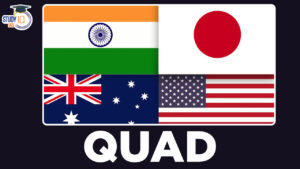Table of Contents
Maharashtra Quota Bill And Concerns
Context: The Maharashtra Assembly passed a bill granting 10% reservation to Marathas in jobs and education, sparking debate over its adherence to SC guidelines and concerns of exceeding the 50% reservation cap.
Overview of the Maratha Reservation Bill
- Passage of the Bill: On February 20, the Maharashtra Assembly passed a bill granting a 10% reservation to the Maratha community in education and government jobs, unanimously.
- Distinct from OBC Quota: The new legislation does not affect the existing OBC quota.
- Non-Kunbi Marathas are covered under this new law, allowing the Maratha community to benefit from two separate categories of reservation for the first time.
- Exclusion of Creamy Layer: Individuals within the creamy layer of the Maratha community are not entitled to this reservation benefit.
- Justification for the Bill: Based on the report by the Justice (retired) Sunil B Shukre-led Maharashtra State Backward Class Commission, which surveyed over 158 million families, the bill argues “exceptional circumstances” justify the reservation beyond the 50% Supreme Court-approved limit.
- It found 84% of Marathas are not advanced, facing extreme poverty and decline in agricultural income.
Historical Context and Previous Attempts
- Initial Demand: The demand for Maratha reservation dates back to 2014, under a non-statutory committee led by Narayan Rane, which identified the need for economic upliftment through a special quota.
- Legal Challenges: Initial attempts for Maratha reservation faced legal hurdles, including a Bombay High Court stay and the Supreme Court’s cap on reservations at 50%, citing a lack of “extraordinary situations.”
Supreme Court’s Stand on Maratha Reservation
- 2018 Commission and Act: Following the Supreme Court’s guidelines, the Maharashtra government formed a commission under Justice (retired) N.G. Gaikwad, recommending 12-13% reservation for Marathas, which was enacted in the Maharashtra State Reservation for SEBC Act, 2018.
- 2021 Supreme Court Verdict: A five-judge Constitution Bench of the Supreme Court in Jaishri Laxmanrao Patil versus Chief Minister, Maharashtra struck down the Maratha quota in May 2021, ruling that no exceptional circumstances justify exceeding the 50% reservation limit for Marathas, dismissing them as a “dominant forward class.”
Judicial Viability of the New Legislation
- Scepticism on Passing Judicial Muster: Legal experts expressed doubt about the legislation’s compliance with Supreme Court guidelines, highlighting the lack of evidence for social and educational backwardness among Marathas to justify exceeding the 50% reservation cap.
Conclusion
- Existing Reservations: Maharashtra already has 52% reservations for various communities, with the addition of the 10% EWS reservation bringing the total to 62%.
- The new Maratha quota potentially raises the total reservation to 72%, pending judicial review.
- Continuing Debate: The legislation’s success hinges on its ability to withstand judicial scrutiny against the backdrop of established reservation limits and the criteria for classifying communities as socially and educationally backward.
We’re now on WhatsApp. Click to Join
Methanesat
Context: MethaneSAT was launched on a SpaceX Falcon9 rocket from California, USA.
About MethaneSAT Launch
| Aspect | Details |
| Objectives | To monitor global methane emissions, identify sources and changes over time. |
| Promoting Entity | Environmental Defense Fund (EDF), a US-based environmental advocacy group. |
| Developing Partners | Harvard University, Smithsonian Astrophysical Observatory, New Zealand Space Agency. |
| Mission Partner | Google. |
| Features |
|
| Advantages |
|
| Limitations | Data availability does not ensure that polluters will curb emissions or change behaviour. |
INS Jatayu
Context:
- Naval Detachment Minicoy will be commissioned as INS Jatayu, an enhanced naval base in Lakshadweep.
- INS Jatayu becomes the second naval base in Lakshadweep after INS Dweeprakshak, bolstering India’s maritime security infrastructure.
Strategic Importance of Lakshadweep Islands
- Location and Composition: Lakshadweep is an archipelago of 36 islands, located off the coast of Kochi, with 11 inhabited islands.
- Strategic Value: The islands are strategically positioned close to major maritime routes and are part of a vital island chain in the Indian Ocean.
Minicoy’s Maritime Significance
- Critical SLOCs: Minicoy oversees crucial Sea Lines of Communications, including the Eight and Nine Degree Channels, key maritime highways.
- Environmental Vulnerability: The island’s proximity to shipping lanes makes it susceptible to marine pollution risks.
Features of INS Jatayu Naval Base
- Operational Command: INS Jatayu falls under the Naval Officer-in-Charge (Lakshadweep).
- Infrastructure Expansion: The base will be enhanced with new facilities like an airfield and personnel housing, subject to environmental approvals.
Significance Of INS Jatayu
- Operational Capabilities: The establishment of INS Jatayu aims to improve the Navy’s operational capabilities in the region.
- Anti-Piracy and Rescue Operations: It will support anti-piracy, anti-narcotics actions, and serve as a first responder in the western Arabian Sea.
- Increased Military Presence: INS Jatayu enhances the Indian Navy’s western seaboard defences.
- Extended Operational Reach: The proposed airfield will support various aircraft operations, extending surveillance and response capabilities.
- Countering Regional Influence: The commissioning is timely, considering India’s efforts to counteract Chinese influence and recent strains in India-Maldives relations.
Article 371
Context: Amid protests in Ladakh, the Indian government is contemplating granting protections similar to Article 371 to the Union Territory, safeguarding local interests in land, jobs, and culture.
About Article 371 and the Sixth Schedule
- Article 371 of the Constitution includes special provisions for 11 states, including six of the Northeast.
- For instance: Article 371A prohibits non-residents from buying land in Nagaland, which may only be bought by tribals, residents of the state.
- The Sixth Schedule of the Constitution under Article 244 has provisions for formation of autonomous administrative divisions within a state, with certain legislative, judicial and administrative autonomy.
Examples, Case Studies and Data Points For Value Edition
- Solar energy (GS 3): India’s solar capacity additions sharply declined by 44% in 2023, the lowest since 2016.
- Gender Parity (GS 2): Over the past five years, the gender ratio at premier institutes such as Indian Institutes of Management (IIMs) has hovered around 35–70 female students for every 100 male students.
- Geophysical Phenomenon (GS1): The 2023-24 El Nino has peaked as one of the five strongest on record and will continue to impact global climate in the coming months despite a weakening trend– the World Meteorological Organisation.
- Employment, Growth & Development (GS 3): The country’s unemployment rate declined to 3.1% in 2023, as against 3.6% in the preceding year, according to the latest employment-unemployment indicators report under Periodic Labour Force Survey (PLFS) by the National Statistical Office (NSO).


 Dalai Lama Confirms He will have a Succe...
Dalai Lama Confirms He will have a Succe...
 Transforming Remittances Landscape in In...
Transforming Remittances Landscape in In...
 QUAD Countries: Members, Objectives, Imp...
QUAD Countries: Members, Objectives, Imp...





















